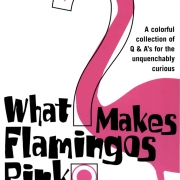Blog It Again, Sam – But Different
Out of new ideas? Rewrite the same piece using another POV (point of view), advises Mariah Richard in Writer’s Digest. Richards suggests a variety of same-but-different approaches, including:
- If you told the story in first person, try telling it in third person.
- Start with what was the conclusion in your first piece, follow with the “back story”.
- Relate the same set of events, but from the perspective of a different character.
“Writing is rewriting”, MasterClass warns, and mastering the art of the rewrite is essential for novice writers and professionals alike. “If you put real work into your rewrite, a good piece of writing can become great.”
Both these concepts – generating new content by reworking old content and updating already published content – apply to content marketing, we know at Say It For You.
Using existing content as inspiration for content now
When our Indiana freelance blog content writers are sitting down with business owners or professional practitioners who are preparing to launch a blog, one important step in that launch is to select recurring themes that will appear and reappear over time in their blog posts. But, to add variety and maintain interest (on the part of both writers and readers!), the “templates” can be varied, including list posts,, review posts, OpEd opinion pieces, and interview posts. In addition to varying the format or template, I teach, you can offer different kinds of information in different blog posts.
Updating old blog posts
“Refreshing and rewriting blog posts can be pivotal to the success of your blog,” nectafy.com explains. “Aim for an update at least every 15 months.” The changes can reflect progress and changes in the industry as well as changes in the products and services offered by the business or practice owner.
Out of “new” blog post ideas? Re-new the “core” concepts using a different point of view. Blog it again, Sam, but different!






Follow us online!